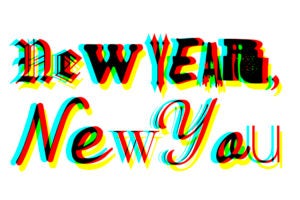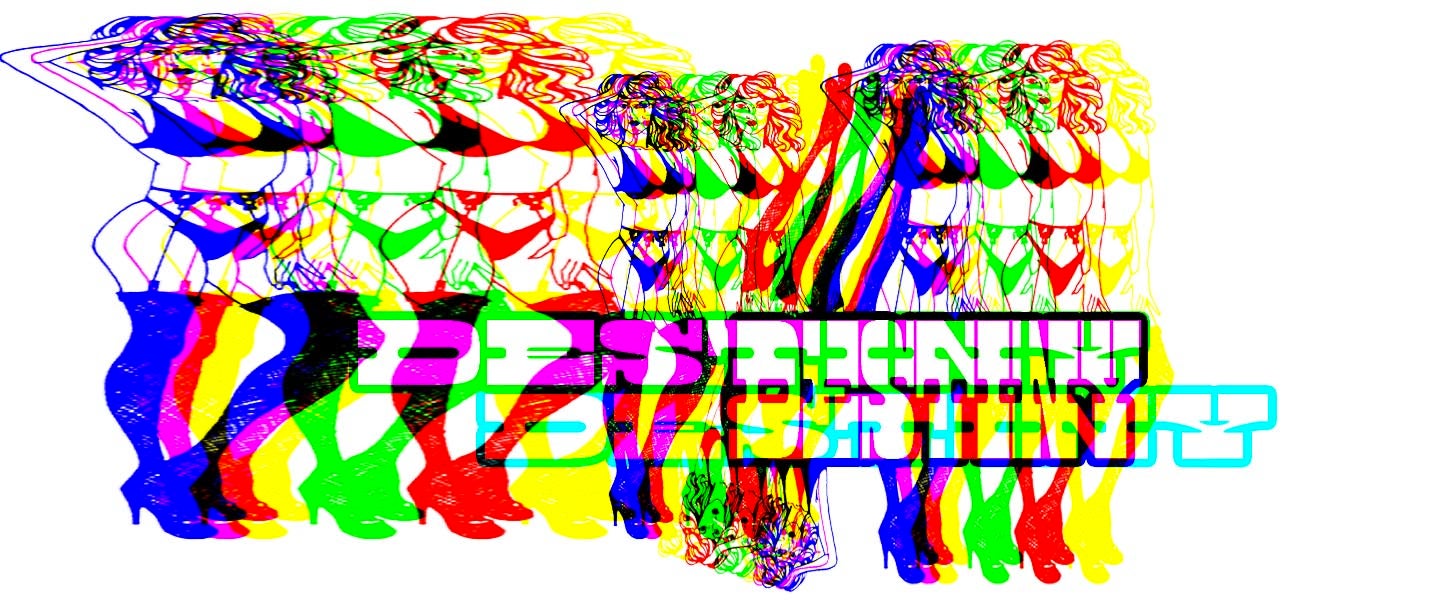 Is there a better way to change everything about your life than by changing your name? Because while it might not completely erase your circumstances, it definitely allows for a new you, if in name only. So this week, we’re looking at what’s in a new name — for yourself, for your favorite TV characters, for your boat, for your stripper, for your son and for nearly everybody (and thing) in between.
Is there a better way to change everything about your life than by changing your name? Because while it might not completely erase your circumstances, it definitely allows for a new you, if in name only. So this week, we’re looking at what’s in a new name — for yourself, for your favorite TV characters, for your boat, for your stripper, for your son and for nearly everybody (and thing) in between.
We’ve all heard the urban legends or typed our info into some online generator: Your stripper name is the name of your first pet and the street of your childhood home. Or it’s the last food you ate and the color of your underwear. Or it’s the object closest to you and your least favorite day of the week.
But in reality, your stripper name is the one you think will make you the most money, ensure you can get a different job in the future or protect your real identity so customers can’t find your address. For dancers, the stage name is a boundary, one that separates their everyday self from their work self. Or maybe it represents the self they want to be, choosing a name to go by as an act of significance.
At the same time, a name can be just a name, dictated by what’s popular, what’s available and what people can actually hear in a noisy bar. “I tried different names on customers until I found one they understood and liked,” says Simone, who runs the dancer resource site WomensWhork. “Sometimes it’s hard to hear in the club. Once, I tried ‘Ruby,’ and customers thought it was ‘Rudy.’ I tried ‘Aries,’ my sign, and they thought it was ‘Hairy.’ I tried ‘Heiress,’ and the DJ had never heard the word before and didn’t know how to say it, so he skipped me.” She finally settled on Simone because it’s “the most typical Jamaican name I can think of.” And yet, people still often hear the name “Simon” over the blaring music of the club.
Sociologists posit that the practice of having a stage name is a means of managing the “stigma” around stripping. In the journal article “Managing the Toll of Stripping: Boundary Setting Among Exotic Dancers,” sociologist Bernadette Barton identifies the development of a persona as one of three psychospatial boundaries used by dancers to manage the “toll” of the job, along with distancing themselves from fellow dancers and establishing personal rules regarding touch.
In practice, these boundaries build the illusion of intimacy with a customer and a desire for the unattainable. The customer seeks to break down these divisions, making the intimacy real and the unattainability an act. The job of the dancer, then, is to convince the customer that this is indeed what’s happening — that she’s not like the other girls, that the rules about touch are those of the club and not her own and that the woman before him is who she truly is.
But often, customers aren’t content to think, or pretend, that the dancer before them was given the name “Candy” at birth. “Just like women, men want intimacy, and despite popular belief, they too know that intimacy is more than just sex,” writes Chase Kelly on her site Survive the Club. “Sometimes guys just want to get to know the person that’s grinding on them,” and many believe that knowing a dancer’s real name is the answer. “Say your real name is your dancer name and that fake names are so 1990s, or have a fake real name on deck,” Chase advises.
But protecting one’s real name is only one piece of the dancer-safety puzzle. Many dancers utilize Google Voice telephone numbers to avoid having their identity linked to their texts and calls or create entirely new social media profiles utilizing their stage name so that their customers can still contact them. Because even while working, dancers aren’t immune to violence. In one study from Portland State University, 32 out of 33 dancers surveyed had experienced some form of violence on the job. Eighty-five percent had experienced sexual assault, while 53 percent had experienced other forms of physical violence. The majority of these assaults occurred in private dance areas.
Given these hazards, many dancers have taken issue with the stripper name generator memes as they’re dispersed on Twitter. Others, however, think these memes are the least of their problems. “When I did sex work, my real name being found out was the last thing on my mind ’cause I was terrified I was talking to white supremacists who wanted to kill me,” says Sabria, a black former sex worker. “It makes me resentful because I have to think about so many things with sex work, my race being No. 1. I mainly talk to white tricks, and I always get scared they will hate-crime me because I’m black. They expect different things from me.”
“Your stripper name is-“ if you shared this piece of shit meme you legally owe a sex worker $20
— Chaotic Futch (@Magsalicious) January 6, 2020
Just ur periodic reminder that this is ignorant and hurts sex workers. A “stripper name”? You mean a stage name. Strippers have these names to remain anonymous because of all the threats, stalking, violence that occurs to sex workers. This will never be funny to me https://t.co/WjZhK61UV7
— ky (@sativaky) January 3, 2020
And so, ultimately, her name has little impact on the experience. “I have to be almost a stereotype of me, and when I’m servicing them, I’m doing things I can’t escape from in my real life — outside of Domme stuff — because of my blackness,” she says. “People already think I’m hypersexual and aggressive, and that’s what I have to be for the job, so I don’t get a break from that in my daily life.” Still, Sabria utilized a different name while working: Mistress Vorhees, which better identified her as a Domme to prospective customers.
Much of what makes a “good” or “bad” dancer name is entirely subjective, and it generally comes down to its money-making power. While one guy might cringe at the name “Crystal,” it could offer another just the right layer of fantasy needed to fork over a grand. Essentially, at the club, a name can have as much implied meaning as one’s imagination will allow. “Baby” plays into an infantilized, innocent persona. “Kinky” might work in its obviousness. “Natalia” and “Nadia” imply a white exoticism that can make men feel as though they’re experiencing something new. “Claire” or “Jessica” offers a girl-next-door quality, suggesting that the stripper is attainable, and that if you met her at a bar, she’d end up on your lap just the same.
For that reason, a “bad” name often disrupts the fantasy. Among the most popular threads of all-time on StripperWeb focuses exclusively on listing the worst names dancers have seen their co-workers choose, with nearly 2,000 comments. “We had an Allegra (the medicine for allergies) and a Eugina — those two were the worst I heard,” writes one. “How about Moet, Cricket, Seven or Jaja,” another offers.
Some dancers will even change their stage names according to the club or audience. For instance, a new dancer will arrive having selected a name another dancer already uses. “I have three stage names,” explains one StripperWeb user. “My first is Luscious. I just picked it because my real name starts with an L, and it was easy for me to correct myself if I started to give a custie my real name. I use this at Black clubs. My second name is Aeris. I’m a big Final Fantasy dork, and I also love the Greek Goddess of discord and mischief. I use this at white clubs. My third name is Nikki. I got it from the Prince song. I love Prince. I use this name at the mixed race private parties I work.”
In some clubs — upscale, predominantly white clubs — managers might enforce a set of standards for the names women are allowed to dance under. Typically, these names have to be more common, or at least less stereotypical “stripper” names (i.e., no Bambi). The reason is that fake-sounding names don’t work in certain clubs, and thus, dancers weed out such names themselves. “I had chosen ‘Starlet’ from a movie,” says Simone. “But it was too fake for the upscale club.”
In analyzing the significance of the dancer persona, Barton writes, “Because the dancer self is not her ‘real’ self, the actions she engages in at work do not reflect her worldview, morals or personality. She is playing a role. This means that sometimes, the dancer is not only performing a fantasy for her customers, she is performing a fantasy for herself. The specific nature of the fantasy — sex goddess, most popular girl in school, avenging warrior woman — is less significant than its purpose: to enable a woman to act in ways she normally would not, to distance herself from those actions, and in some cases, to explore a hidden aspect of herself and preserve her self-respect.”
Yet, for Simone, this hasn’t been the case at all. “I never found stigma in being naked,” she explains. “Half these dancers don’t get naked, anyway. Is there stigma from outside people? Yes, but I never cared. This is what I’ve wanted to do since I was 12 or 13 years old.”
Therefore, Simone doesn’t need a new name to preserve her self-respect. She needs a new name to protect herself, and maybe to make a rack. After all, it’s not the name that allows a woman to play the role. It just helps sell the fantasy.

